Please set the alarm clock. These nights, you can see the astronomical landscape of Saturn with the moon
Author:Astronomy online Time:2022.08.08
Seeing the moon close to Saturn on August 9th and 10th
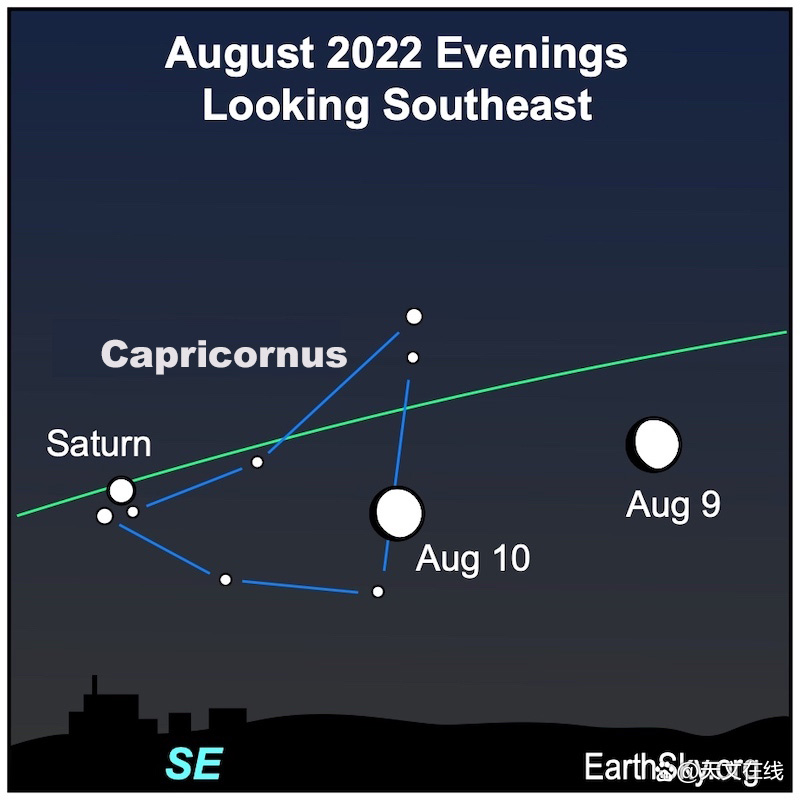
Watching the moon approaching Saturn on the evening of August 9 and 10, 2022. The bright crescent moon guides you to see Saturn and dim Capricorn. Saturn reached the phase on August 14. Draw by John Jardine Goss.

Watch the moon near Saturn
The bright crescent moon will approach Saturn on the evening of August 9 and 10, 2022. At 17 o'clock on August 10 when coordinating the world, the moon reached the nearly place, or the point closest to the earth on the orbit of its monthly. At that time, the moon would be 223586 miles (359828 kilometers) from the earth. In fact, at 1:36 on August 12th in 2022 when the world coordinated the world, one and a half days earlier than the super full moon. However, the super moon not only looks bigger, but it is indeed brighter.
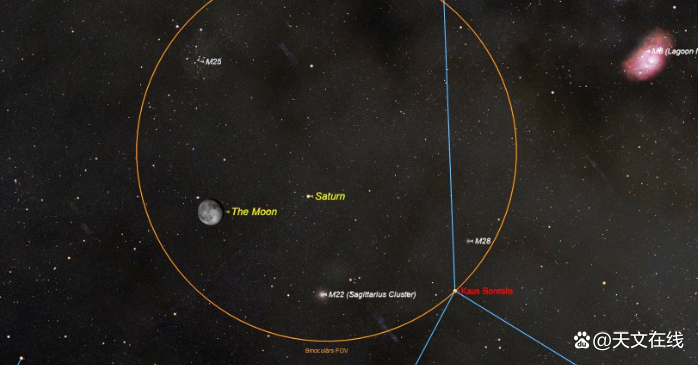
Saturn is close to phase
Then, on August 11, the moon came to Saturn's 8x moon diameter (4 °) on August 11. Although Saturn's brightness is +0.3, this magical circular world may still be difficult to see under the strong light of the moon. If so, try to put your fingers on the moon to better watch Saturn. This is the most far world that you can easily see with your eyes
In addition, Saturn reached the phase on August 14, 2022. Earth

The upper month of the full moon? (Terms: Ying Bangyue) and Saturn can help you distinguish the darkened sea goat Capricorn. Capricorn is one of the Twelfth Palace of Yodao.
Capricorn's stars form an arrow, but because the moon is near, it may be difficult for people to observe them. Because the star stars that make up the arrow are only 3 to 4.

On the evening of August 9 and 10, 2022, there will be a bumpy moon and a Saturn with the month. The moon arrived at the nearly place on August 10, when it was until August 11, for the super moon.
related information
The super moon is the full moon or crescent moon that is almost nearly located -the moon is closest to the places of the earth on its ellipse orbit -leading to the size of the moon from the earth is slightly greater than usual. The technical name is Syzygy (Earth -Moon -Sun System) or a full moon or crescent moon around the nearby place. Because the word super moon originated from astrology, it does not have a clear astronomy definition. The true connection between the moon and the ocean and crust tide caused someone to claim that the phenomenon of super moon may be related to the increase in the risk of earthquakes and volcanic eruptions.
On the contrary, the full moon or crescent moon around the distance or the distant place is called micro -moon.
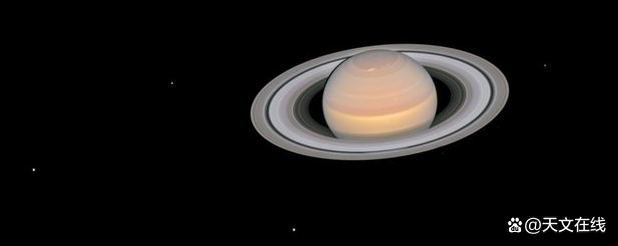
In the asteroid of the solar system, Saturn is the sixth far away from the sun, ranking second in size, second only to Jupiter. It is a giant star with an average radius of about 9.5 times the earth. [23] [24] density is only 1/8 of the earth. However, because of much larger volume, its quality is more than 95 times that of the earth. [25] [26] [27] The internal composition of Saturn is likely to be a core of iron -nickel alloys and rocks (silicon and oxygen compounds). Its kernel is surrounded by layers, with thick metal hydrogen layers from the inside to outside, then liquid hydrogen and liquid crickets, and finally the outer layer of the atmosphere. The amino crystals distributed in the upper layer of its atmosphere make the entire star light yellow.
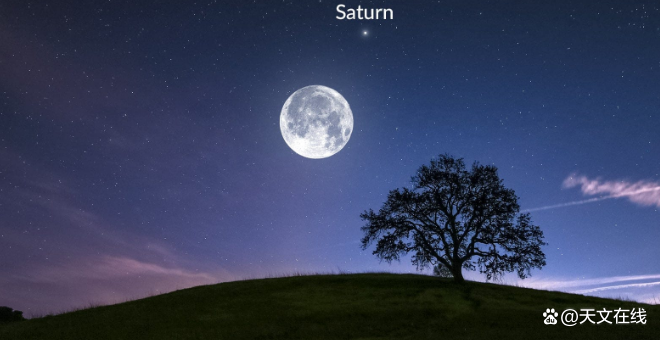
It is believed that Saturn's planetary magnetic field is generated by the current in its metal hydrogen layer. Although weaker than the earth's magnetic field, Saturn's magnetic moment is 580 times that of the earth due to its huge volume. Compared with Jupiter, Saturn's magnetic field strength is only about 1/20 of Jupiter. [28] Although the outer atmosphere of Saturn is likely to exist for a long time, it is usually relatively stable and peaceful, and there is a lack of significant differences in changes. The wind speed on the surface of the Saturn is higher than Jupiter but not Shanghai King Star. It can reach 1800km/h (1,100mph; 500m/s). [29]
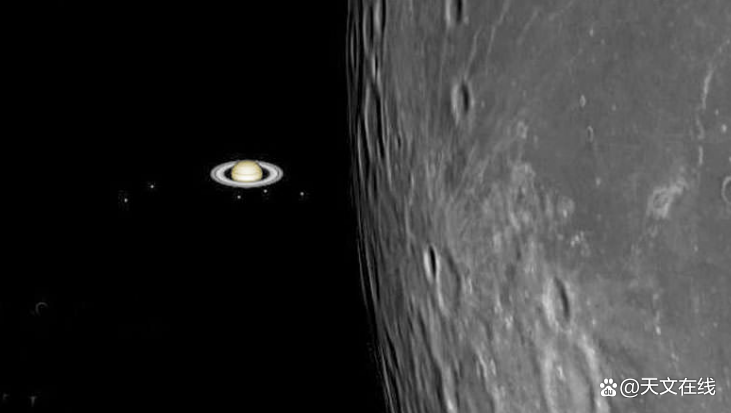
The most significant feature of this planet is its prominent planetary ring system. The main components are ice particles and a few rock wreckage and dust. It is known that at least 83 satellites [30] run around Satosper, of which 53 have been officially named; this does not include hundreds of small satellites in its planet ring. Tuwei VI is the largest satellite and the second largest satellite in Saturn. Although the quality is small, it is larger than the Mercury in the planet, and Tuwei Liu is the only satellite in the solar system with obvious atmosphere. [31]
By: Marcy Curran
FY: Astronomical Volunteer Team
If there is related content infringement, please contact the author to delete after the work is released
Reprinted, please obtain authorization, and pay attention to maintaining integrity and indicating the source
- END -
High -quality development research bank · Liutu shows how Ruisheng Technology becomes a leader of innovation

(Author: Reading Special Rong Media Lab)
25 -year -old youth | Highlight the advantages of intellectual manufacturing to create a highland -related industrial strategy highland
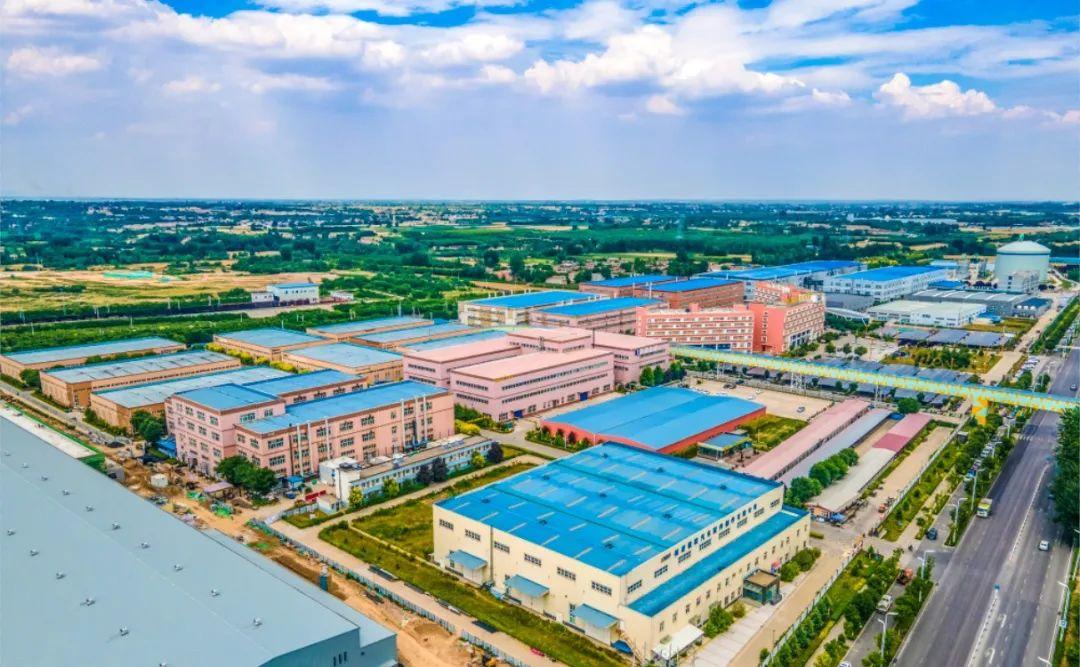
Highlight the advantages of intellectual manufacturing to build an agricultural in...